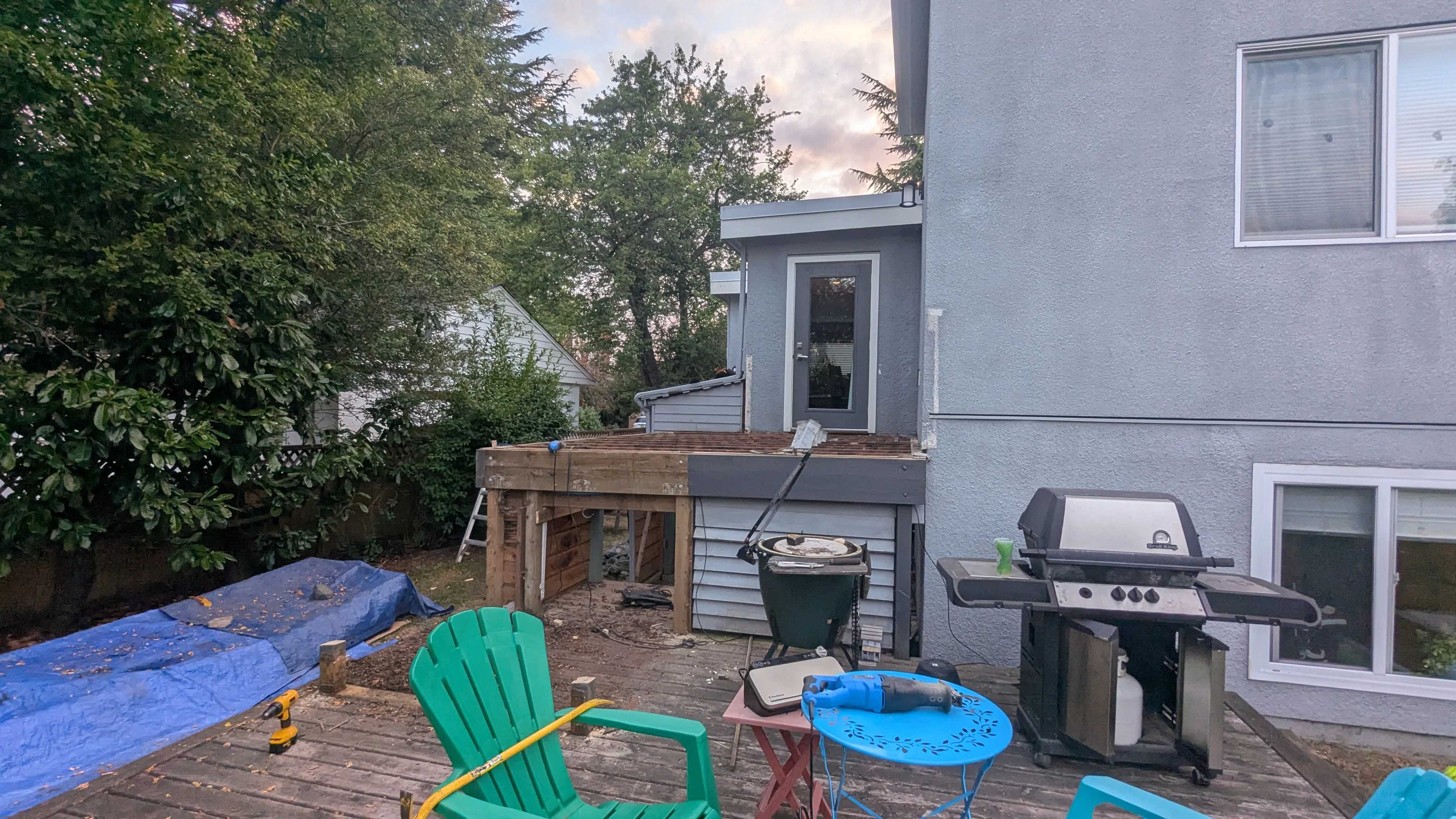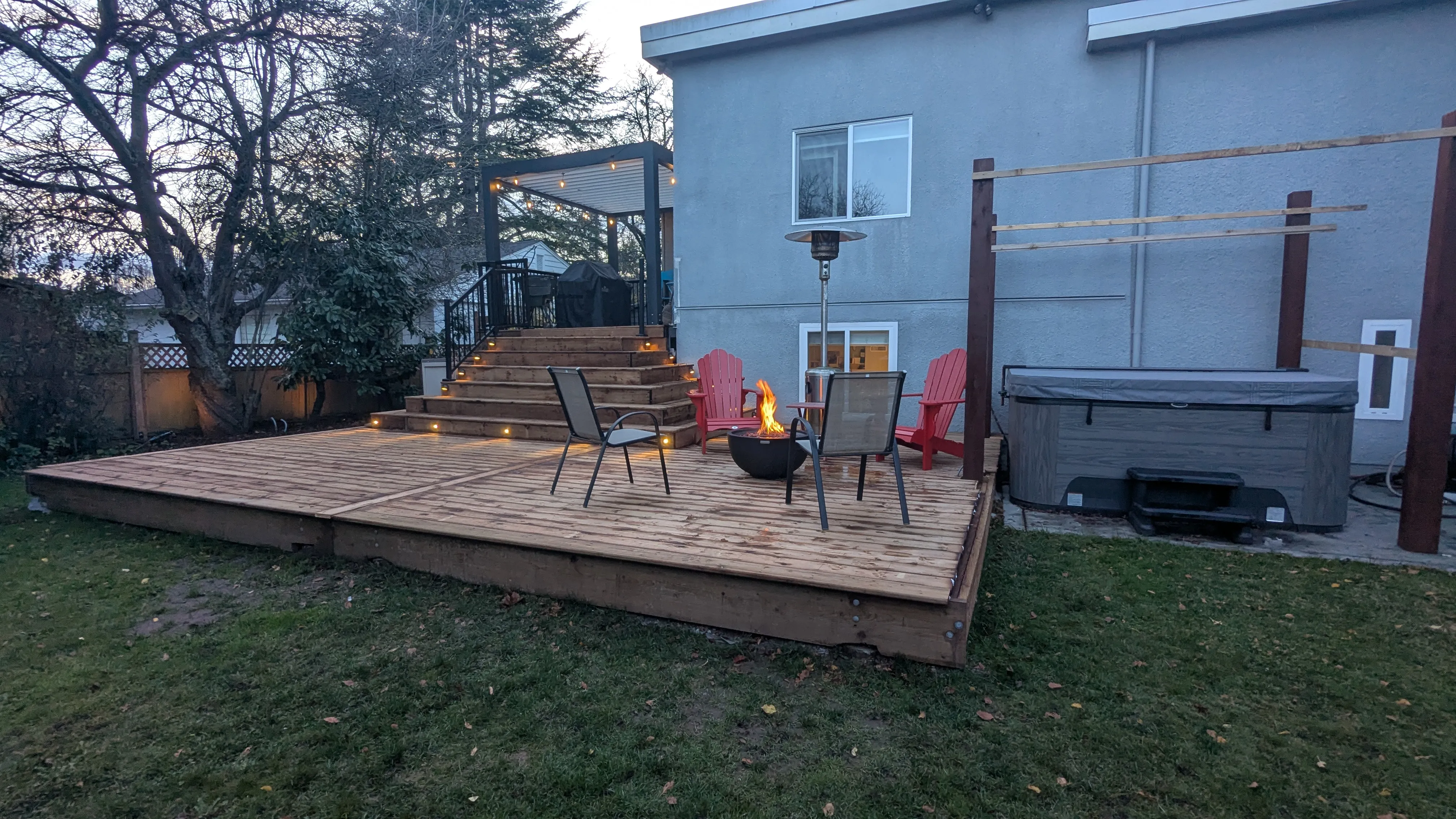Most of my work with AI happens in the expected places — writing code, reviewing pull requests, experimenting with language models, or building developer tools. It’s part of my everyday toolkit.
But this project was different.
This time, I used AI not for work, but for something tangible — designing and building a deck in my backyard.
What started as a bare patch of grass turned into a hands-on experiment in practical AI — using tools like Midjourney and Gemini not to generate code or content, but to help imagine, communicate, and refine a real-world design.
And unlike most AI projects, this one didn’t live in a repo or a demo.
It lives in my yard.
The Starting Point: A Blank Yard and a Rough Vision
I started with this:

A plain deck, aging boards, awkward layout, and a big patch of grass that wasn’t being used for anything interesting. I had ideas in my head—fire table, dining area, pergola, hot tub; but nothing cohesive. Traditionally, I would have sketched on paper or fired up SketchUp. But this time, I tried something new.
Step 1: Using AI to Explore Possibilities
I fed a photo of my yard into Midjourney and Gemini and started prompting:
“Create a modern deck layout with warm lighting, a fire table, a pergola, and a hot tub on the right.”
“Try a version with cascading stairs.”
“Add outdoor seating and a dining area.”
The result?

This wasn’t a construction drawing. It wasn’t buildable as-is. But it did something incredibly valuable:
AI turned my fuzzy ideas into something my family and I could react to.
Instead of endlessly describing possibilities…
…we could see options instantly.
We could say:
- “Yes, that’s the vibe.”
- “No, that pergola isn’t what we want.”
- “The fire table looks perfect there.”
- “Move the hot tub.”
It became a rapid-feedback loop for brainstorming.
Step 2: From AI Inspiration to Real Engineering
AI couldn’t tell me how to make the deck safe. It couldn’t size joists or beams. It definitely wasn’t going to get past my building inspector. Once we agreed on a design direction, I switched to my actual workflow:
- Hand-drawn plans
- Measurements
- Proper engineering diagrams
- Materials lists
- Cut sheets
- Load calculations
- And, of course… building the thing myself
The AI render wasn’t a blueprint. It was the vision, not the plan.
But having that vision made the rest dramatically easier.



Step 3: Building the Deck — Reality vs. Render
Fast-forward through lumber deliveries, weekends with tools, and a lot of “measure twice, cut once”… (I cut once, then cut again, then cut a third time—AI didn’t fix that.)
Here’s the current real-world result:

 It’s not completely finished yet, but it’s undeniably the same idea we first saw in the render. And that’s the magic of practical AI: it helps you see the destination early, so you can walk toward it more confidently.
It’s not completely finished yet, but it’s undeniably the same idea we first saw in the render. And that’s the magic of practical AI: it helps you see the destination early, so you can walk toward it more confidently.
What Practical AI Did—and Didn’t—Do
✔️ AI helped me:
- Explore design ideas visually
- Communicate concepts to my family
- Test layouts before committing
- Iterate quickly
- Build momentum and excitement
- Spot opportunities (like stair lighting and layout flow)
✘ AI did not:
- Produce engineering drawings
- Tell me how to build the structure
- Choose materials
- Guarantee safety
- Solve construction problems
- Lift heavy lumber (tragically)
This was augmented creativity, not automated creation.
Why This Matters
There’s a narrative that AI will either replace everything or is useless. Neither is true.
There’s a huge middle ground where AI:
- Speeds up decision-making
- Boosts creativity
- Helps you see possibilities
- Reduces the friction between idea and execution
And that’s exactly where most people can benefit; home projects, DIY renovations, landscaping, interior design, woodworking, you name it. Not as a replacement for skill or experience. But as a superpower for the planning phase.
Final Reflection: AI Made the Project More Fun
The biggest surprise wasn’t the design help. It was the collaboration. My family and I could all react to the visuals. We weren’t debating abstract ideas—we were pointing at images and saying:
- “Let’s make this happen.”
That clarity kept the project moving and helped me avoid the usual DIY indecision loops.
AI didn’t build the deck. But it helped me build the right deck. And for me, that’s the perfect definition of practical AI.